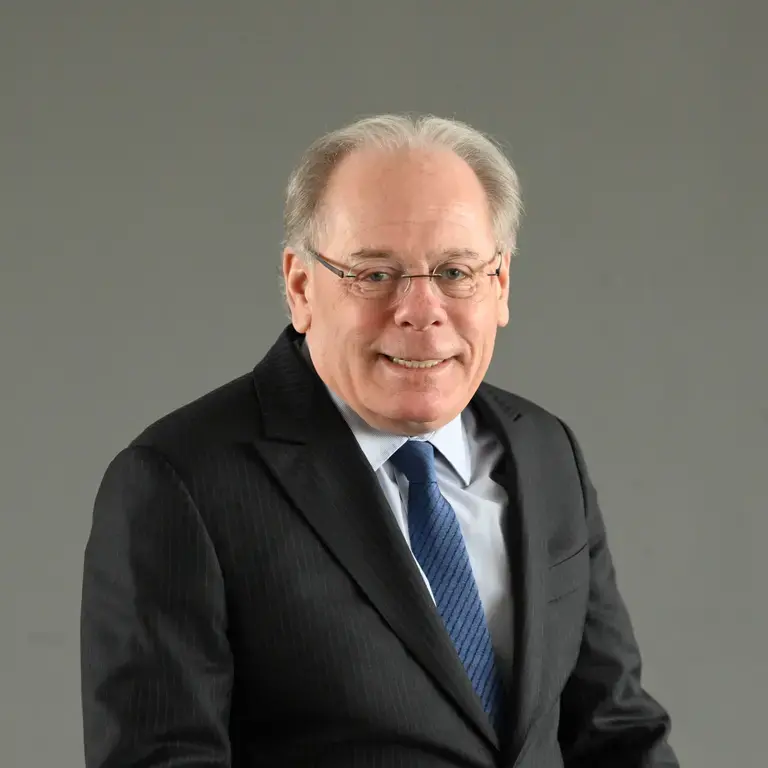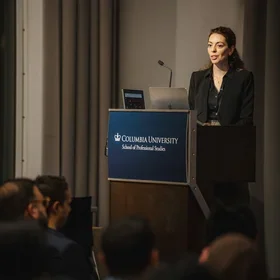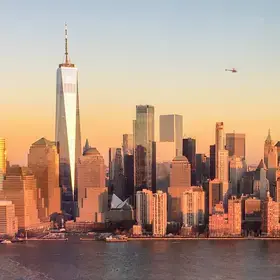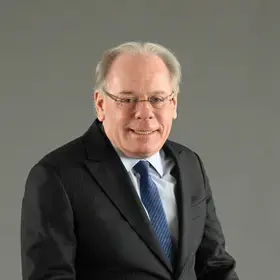By Steven Cohen, Ph.D., Director of the M.S. in Sustainability Management program, School of Professional Studies
It started with Governor Hochul and Congressman Jeffries’ shameful retreat from congestion pricing, and now we see the same political cowardice bubbling up in the New York City Council about Local Law 97—the city’s landmark legislation to reduce greenhouse gas pollution from large buildings. These progressive elected leaders talk a good game about climate change but go into retreat mode whenever the costs of decarbonization become real. According to Valerie Block of Crain’s New York:
“Local Law 97 would impose fines on building owners who fail to reduce emissions under a set of escalating caps. Compliance could require expensive retrofits for aging buildings. But now, a bill in City Council would slash fines for building owners who fail to meet the requirements. Queens Councilwoman Linda Lee is pushing legislation that would affect 10% of the 50,000 buildings covered by the climate law, Lee recently told Crain’s. “I think, practically speaking, [the law] set a really high bar that really could impact people financially in a negative way,” she said… Observers note that buildings that can’t afford the costly upgrades will struggle to comply, or might even decide that paying the fines would be cheaper than compliance. “So those are real problems that need to be addressed,” said Eli Dvorkin, editorial and policy director at the Center for an Urban Future, an independent, nonpartisan policy organization. But he added, “Addressing those problems by weakening penalties or enforcement isn't the right solution. Instead, we need a much stronger focus on developing the capacity to provide affordable financing and technical assistance needed to boost compliance.”
The Adams Administration and Department of Environmental Protection Commissioner Rohit Aggarwala remain firmly committed to Local Law 97 and are working to aid building owners struggling to meet the law’s requirements. About a year ago, the Adams Administration analyzed the financial challenges of Local Law 97 and, in a report entitled “Getting 97 Done,” observed that:
“Buildings that have to do work to comply with LL97 could receive $625 million in Federal tax refunds and subsidies from the Inflation Reduction Act. Further, the opportunity exists to use the J-51 tax abatement approved by the New York State Legislature to help low- and moderate-income rental buildings, coops, and condos comply with the law. Close to 1,300 coops and condos across the City currently over their 2030 limits could be eligible to receive the J-51 tax abatement. Finally, the New York State Public Service Commission (PSC) recently directed utilities and the New York State Energy Research and Development Authority (NYSERDA) to propose plans for offering $5 billion in EE programs for 2026-2030. A reasonable share of this funding should be directed towards LL97 compliance in multifamily buildings that must undertake deep retrofits to comply with LL97.”
If the law is weakened, then even landlords who can afford compliance will stop investing in energy efficiency and renewable energy; and so, the subsidy route is a far more effective policy. Moreover, as Adams’ report notes, there are state and federal rules and resources available to assist building owners required to decarbonize. What is striking is how quickly some of our elected officials retreat from environmental policies that incur short-term costs to generate long-term benefits. A building that is more energy efficient and reliant on renewable energy pollutes less. Additionally, in the long run, the operation and maintenance costs of an outmoded building are higher than the costs of compliance. Similarly, congestion pricing reduces traffic and lowers the cost of moving products and people. It also reduces air pollution while stimulating long-term investment in mass transit. It makes New York City a more efficient place in which to conduct business. Local Law 97 modernizes the city’s aging building stock, making it less expensive to operate our buildings. Both policies represent investments in transforming New York into a sustainable city.
It is not surprising that people don’t like to be regulated or pay for the costs of compliance. But while the short-sighted approach may be politically expedient, it is costly in the long term. We are already seeing that with Hochul’s cowardly retreat from congestion pricing. It’s true that the congestion fee doesn’t poll well, but what tax is beloved by anybody? New York’s mass transit system was counting on the billion dollars a year that the congestion fee would have generated. Just like the bad old days of the 1970s, the system is falling apart. Every day, we are seeing breakdowns, delays, and declining service. Meanwhile, traffic congestion in Manhattan continues to get worse, and the valuable time of those stuck in traffic is never considered when analyzing the costs and benefits of charging people for using New York City’s scarce street space for private automobiles. I won’t repeat the arguments I’ve made many times for congestion pricing, but Hochul’s foolish and short-sighted decision is not facilitating New York City’s economy but impeding it. Last week, in a sad but accurate New York Times report, Ana Ley observed that:
“Seven years ago, after a series of subway failures so severe that a stretch of 2017 came to be known as the Summer of Hell, New York officials came up with a plan to make sure a crisis like that would never happen again. Through a tolling program known as congestion pricing, they would raise enough money to restore the system to competency. This would ward off the kind of meltdowns that had left passengers stranded without service, trapped them in dark, hot cars and injured them in derailments. Now, with congestion pricing on hold, experts warn that a return to hell is inevitable. The tolling program would have generated $15 billion to fund critical infrastructure upgrades such as fixing century-old tunnels and crumbling tracks.”
Hochul’s feeble promise to replace the revenue from congestion fees is not matched by reality and misses the point. The congestion fee by law provided a dedicated revenue stream immune from political shenanigans. It would be as certain as New York City’s water supply, which is paid for by its own dedicated revenue stream: our water bills. New York City’s drinking water is among the best in the world because the resources needed for clean drinking water are never in doubt. By way of contrast, our mass transit system is collapsing. It is a large and ambitious system that provides the city’s economy with a highly mobile workforce and customer base. But, unlike many European mass transit systems, it is chronically underfunded and is showing its age.
The generation-long process of becoming a sustainable city is imperiled by these examples of short-term, politically expedient retreats from forward-looking public policies. New York became a great city because, over a century ago, our political and business leaders invested in mass transit, parks, water, and a variety of other public works. Periodically, our elected and business leaders had the courage to look ahead and invest to protect the future. We saw it in the 1970s when the unions, business leaders, and elected leaders joined together and saved this city from bankruptcy. We saw it in the 1980s when Richard Ravitch and his colleagues renewed our mass transit system. We saw it at the start of the 21st century when Mike Bloomberg led the city out of the ashes after the horror of 9-11. Bloomberg’s team developed the pathbreaking sustainability PlaNYC 2030 and invested in the third water tunnel. Deputy Mayor for Economic Development Dan Doctoroff stimulated public-private partnerships and development projects in every corner of the city. Today, we see few examples of the forward-looking and effective leadership that has always saved this city and enabled it to move forward. A month before she ended congestion pricing, Hochul was praising it. It is reassuring to see the Adams administration and his team pushing to implement Local Law 97, but given the rebellious mood of the City Council and the growing political attacks on the mayor, it’s possible that he might not prevail.
In most of the United States, the largest source of greenhouse gas pollution is transportation. In New York City, our largest source is buildings. This is because most New Yorkers rely on mass transit rather than personal transit. If we are to contribute to reducing global warming and maintaining global competitiveness, we must retrofit our old buildings to be more energy-efficient and less reliant on fossil fuels. New York has a plan to gradually decarbonize our buildings, but like congestion pricing, it requires investment and enlightened forward thinking. We see it on Local Law 97 from Mayor Adams and his team. Will the City Council look forward or backward?
Views and opinions expressed here are those of the authors, and do not necessarily reflect the official position of Columbia School of Professional Studies or Columbia University.
About the Program
The Columbia University M.S. in Sustainability Management program offered by the School of Professional Studies in partnership with the Climate School provides students cutting-edge policy and management tools they can use to help public and private organizations and governments address environmental impacts and risks, pollution control, and remediation to achieve sustainability. The program is customized for working professionals and is offered as both a full- and part-time course of study.



